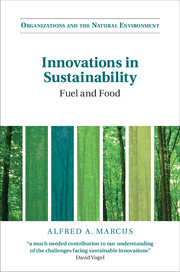Book contents
- Frontmatter
- Dedication
- Contents
- List of figure and tables
- Foreword
- Acknowledgments
- Introduction the path to sustainability
- Part I Funding sustainable startups
- Part II Business models
- Part III The macroenvironment and industry context
- Part IV Finding customers
- 7 Carrying that weight: General Mills and Kellogg's
- 8 Bridge over troubled waters: Pepsi and Coca-Cola
- Part V Competition between mission and non-mission based businesses
- Concluding observations: the journey continues
- Index
8 - Bridge over troubled waters: Pepsi and Coca-Cola
from Part IV - Finding customers
Published online by Cambridge University Press: 05 August 2015
- Frontmatter
- Dedication
- Contents
- List of figure and tables
- Foreword
- Acknowledgments
- Introduction the path to sustainability
- Part I Funding sustainable startups
- Part II Business models
- Part III The macroenvironment and industry context
- Part IV Finding customers
- 7 Carrying that weight: General Mills and Kellogg's
- 8 Bridge over troubled waters: Pepsi and Coca-Cola
- Part V Competition between mission and non-mission based businesses
- Concluding observations: the journey continues
- Index
Summary
Shareholder patience with the slow growth of Pepsi and Coca-Cola only went so far. As global trends went against them and their competition intensified, they faced the question of how to find new customers. Increasingly, they turned to sustainability to set them apart. They hedged their bets by acquiring the assets of alternatives to their carbonated soft drink (CSD) and snack products. These efforts legitimated the types of foods and beverages they sold against critics who attacked the foods and beverages for lacking nutritional value and putting an undue burden on the world's environment.
To what extent were Pepsi's and Coca-Cola's commitments to sustainability assisting them in finding new customers? Should they grow, decrease, or alter their sustainability programs’ direction? How could they better align a commitment to sustainability with their obligation to shareholders to grow their businesses?
Saturated markets
The core North American and European CSD market on which the Pepsi and Coca-Cola heavily depended was saturated. Demand for sugary soft drinks was dropping. Carbonated soft drink volumes were down by an estimated three percent in 2013, the ninth straight year of their decline and more than twice their 2012 contraction, and most marketing firms forecasted a continuing decline in CSD consumption in North American and European markets. With the average American consuming more than a daily 12-ounce (296 ml) portion of these drinks in 2014, and attacks on them from figures such as Michelle Obama and former New York mayor Michael Bloomberg so prevalent, there was little hope that Pepsi and Coca-Cola could significantly raise US consumption.
- Type
- Chapter
- Information
- Innovations in SustainabilityFuel and Food, pp. 226 - 256Publisher: Cambridge University PressPrint publication year: 2015



